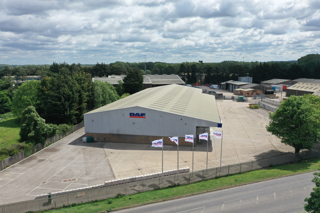Artificial intelligence (AI) technology currently available to fleets could potentially predict almost half of all breakdowns, says Epyx.
However, as well as creating new cost management opportunities and improving operational efficiencies to fleets, it suggests that a range of barriers remain.
The company reports that two projects based around its 1link Service Network platform – used by fleets to manage service, maintenance and repair (SMR) for more than four million company cars, vans and trucks – and others carried out by its customers over the past five years, have shown the “considerable capabilities” of AI but also revealed potential hurdles.
Andy Partridge, technology delivery director at Epyx and R2C, said: “In this context, AI is about using machine learning to examine data so that models can be built that make inferences and identify patterns that are useful in meeting objectives.
“That makes it potentially very useful when it comes to fleet SMR and improving operational efficiencies for customers.”
He explained: “When we first started looking at AI a few years ago, we quickly identified ways in which it could be used.
“Our two pilots assessed how the technology could potentially improve automated SMR authorisation rates and simplify rule management for maintenance controllers, something that produced promising results alongside some issues.
“Looking ahead, in an ideal scenario, AI would learn to identify points of failure on fleet cars, vans and trucks before they happened, meaning that we could steer the driver towards the nearest workshop that could help them before the breakdown occurred.
“This kind of pre-emptive action would obviously have huge value for fleets.”
The good news, according to Partridge, is that the technology is already capable of doing this to a quite impressive degree.
At least one of the AI projects undertaken by a large UK fleet operator, demonstrated at the London Amazon Web Services Summit in June, identified almost 50% of vehicle failures before they happened in an exercise that looked at data retrospectively.
However, he says that a series of hurdles remain that present varying degrees of difficulty.
The three key areas where issues needed to be solved were quality of data throughout the process, obtaining time-sensitive data, and building processes that can handle large streams of information and events - often in real time.
“The data used for machine learning must be of a very high quality otherwise the inferences it makes are of limited use and worse, can introduce biases,” he said.
“Initially, we found that much of the data stored about fleet SMR was not sufficiently robust, but this is gradually improving and in the latest trials, we’ve largely overcome this issue.
“Secondly, we really need to be able to consume connected vehicle data, much of it time-sensitive, to maximise the effectiveness of AI but there are some barriers to both being able to get hold of this information and to do so at an economically realistic cost.
“Again, progress is being made in this area and proof-points are now needed to create pressure on cost barriers and bring data acquisition costs down to a commercially viable level.”
Lastly, he explains that the processing power needed for fleet AI to work in real time is considerable and traditional server arrangements are generally not up to the task.
“This means transferring fleet data to locations where more advanced computing is available in the cloud,” he said.
However, he believes all these issues certainly could be overcome and Epyx is optimistic about the potential to bring products to market that make the capabilities of AI accessible to fleets in the future.
“We’re upbeat about the possibilities of offering fleets the predictive capabilities of AI. Within our wider parent organisation Fleetcor, we are already piloting AI technologies in South America,” he said.
“The potential is considerable and we see it very much as the next step forward for the fleet management technology in which Epyx has been a leader for decades.”






















Login to comment
Comments
No comments have been made yet.